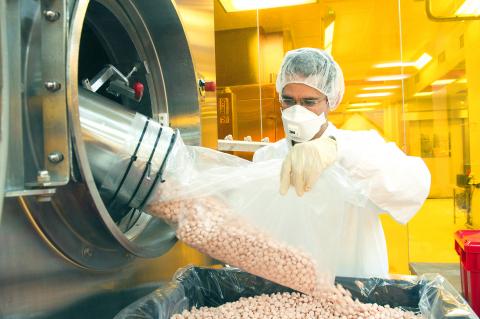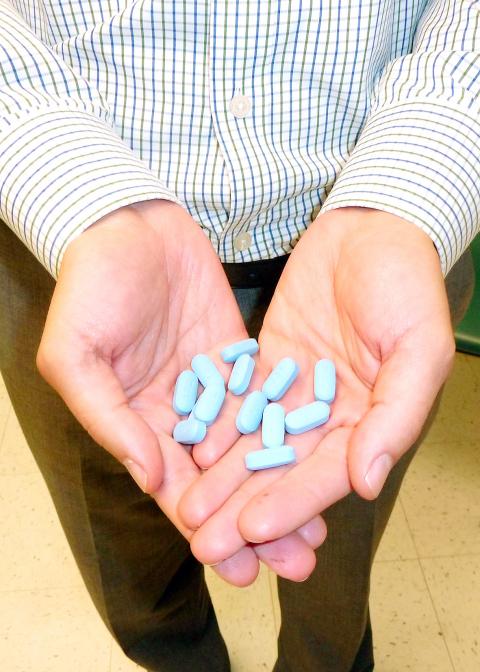The US government will force doctors to be more transparent about details of payments to them by every pharmaceutical and medical device manufacturer, it announced yesterday.
The information is being made public under a provision of the 2010 Affordable Care Act. The law mandates disclosure of payments to doctors, dentists, chiropractors, podiatrists and optometrists for things like promotional speaking, consulting, meals, educational items and research.
It’s not quite clear what the data will show — in part because the first batch will be incomplete, covering spending for only a few months at the end of 2013 — but we at ProPublica have some good guesses. That’s because we have been detailing relationships between doctors and the pharmaceutical industry for the past four years as part of our Dollars for Docs project.

Photo: Bloomberg/Adam Reynolds
We’ve aggregated information from the Web sites of some large drug companies, which publish their payments as a condition of settling federal whistle-blower lawsuits alleging improper marketing or kickbacks. Today, in cooperation with the Web site Pharmashine, we’ve added data for 2013, which now covers 17 drug companies accounting for half of US drug sales that year.
THE FACTS
Here are some facts we’ve learned from the data:

Photo: AFP/Kerry Sheridan
Many, many health professionals have relationships with industry.
Dollars for Docs now includes 3.4 million payments since 2009, totaling more than US$4 billion, of which US$2.5 billion was for research. For 2013 alone, there were 1.2 million payments valued at nearly US$1.4 billion.
It’s not possible to calculate the exact number of physicians represented, because drug companies haven’t used unique identification numbers that cross company lines. But it’s clear that the figure is in the hundreds of thousands.
Excluding research payments, the drugmaker Pfizer appeared to have interactions with the most health care professionals last year — about 142,600. AstraZeneca came in second with about 111,200. Johnson & Johnson and Forest Labs each had nearly 100,000. There are an estimated 800,000 to 900,000 active doctors in the US.
“Most physicians that are in private practice are touched in some way” by the industry, said George Dunston, co-founder of Obsidian HDS, the creator of Pharmashine. “You add that up and it’s a pretty significant number.”
Surveys conducted in 2004 and again in 2009 showed that more than three-quarters of doctors had at least one type of financial relationship with a drug or medical device company. The figure dropped from about 94 percent in 2004 to 84 percent in 2009, said the lead author, Eric Campbell, a professor of medicine at Harvard Medical School and director of research at the Mongan Institute for Health Policy at Massachusetts General Hospital.
Campbell, who has been critical of physician-pharma ties, says he hasn’t conducted a follow-up survey but suspects that the percentage of doctors receiving payments has probably decreased somewhat since then.
“The old approach was just to try to get as many docs as you can, blanket coverage, and establish relationships,” he said. “I think they’re being much more targeted and specific.”
Some doctors have relationships with many companies.
Those who read the fine-print disclosures accompanying medical journal articles know that doctors often have relationships with several companies that compete in a drug category (such as heart drugs or those for schizophrenia). Our data bear that out.
OPINION LEADERS
Some highly sought-after key opinion leaders, as they are known in the industry, work for half a dozen or more companies in a given year.
Dr. Marc Cohen, chief of cardiology at Newark Beth Israel Medical Center, received more than US$270,000 last year for speaking or consulting for six companies listed in Dollars for Docs. He is a prolific researcher and author.
In an interview, Cohen said he works only with companies whose drugs are backed by large clinical studies.
“In general terms, the science behind the product is very strong,” he said. “These are the companies that I’ve chosen to work with.”
A California psychiatrist, Gustavo Alva, earned US$191,000 in 2013 for speaking or consulting for four companies, our database shows. Alva did not return a phone call for this article, but last year he told ProPublica, “I actually enjoy the aspect of educating my counterparts about developments in the field.”
The biggest companies aren’t always the ones that spend the most. Some smaller drug companies spend big, too.
Consider Forest Labs, a midsize drug company that was acquired in July by Actavis, a larger company based in Dublin. Forest’s US$3.8 billion in U.S. drug sales in 2013 placed it on the edge of the top 20 companies, according to IMS Health, a health information company.
Its sales were far lower than those of Novartis and Pfizer, the top two companies by sales last year. Yet Forest easily outspent these competitors on promotional speaking events last year.
Forest spent US$32.3 million on paid talks in 2013, compared with US$12.7 million for Novartis and US$12.6 million for Pfizer.
An Actavis spokesman declined to comment on the company’s strategy, but a Forest spokesman said last year that the company spent more on speakers because it didn’t use pricey direct-to-consumer TV marketing. It also had more new drugs than its competitors.
Companies with newer drugs or newly approved uses for their existing drugs often seem to spend more. Companies that don’t have many new products or have lost patent protection on their drugs, or are about to lose it, tend to pull back.
“A lot of this has to do with where companies are in their development cycle of new products or emerging products, rather than an industry-specific trend,” said John Murphy, assistant general counsel at the Pharmaceutical Research and Manufacturers of America, an industry trade group.

May 18 to May 24 Pastor Yang Hsu’s (楊煦) congregation was shocked upon seeing the land he chose to build his orphanage. It was surrounded by mountains on three sides, and the only way to access it was to cross a river by foot. The soil was poor due to runoff, and large rocks strewn across the plot prevented much from growing. In addition, there was no running water or electricity. But it was all Yang could afford. He and his Indigenous Atayal wife Lin Feng-ying (林鳳英) had already been caring for 24 orphans in their home, and they were in

On May 2, Chinese Nationalist Party (KMT) Chairman Eric Chu (朱立倫), at a meeting in support of Taipei city councilors at party headquarters, compared President William Lai (賴清德) to Hitler. Chu claimed that unlike any other democracy worldwide in history, no other leader was rooting out opposing parties like Lai and the Democratic Progressive Party (DPP). That his statements are wildly inaccurate was not the point. It was a rallying cry, not a history lesson. This was intentional to provoke the international diplomatic community into a response, which was promptly provided. Both the German and Israeli offices issued statements on Facebook

President William Lai (賴清德) yesterday delivered an address marking the first anniversary of his presidency. In the speech, Lai affirmed Taiwan’s global role in technology, trade and security. He announced economic and national security initiatives, and emphasized democratic values and cross-party cooperation. The following is the full text of his speech: Yesterday, outside of Beida Elementary School in New Taipei City’s Sanxia District (三峽), there was a major traffic accident that, sadly, claimed several lives and resulted in multiple injuries. The Executive Yuan immediately formed a task force, and last night I personally visited the victims in hospital. Central government agencies and the

Australia’s ABC last week published a piece on the recall campaign. The article emphasized the divisions in Taiwanese society and blamed the recall for worsening them. It quotes a supporter of the Taiwan People’s Party (TPP) as saying “I’m 43 years old, born and raised here, and I’ve never seen the country this divided in my entire life.” Apparently, as an adult, she slept through the post-election violence in 2000 and 2004 by the Chinese Nationalist Party (KMT), the veiled coup threats by the military when Chen Shui-bian (陳水扁) became president, the 2006 Red Shirt protests against him ginned up by